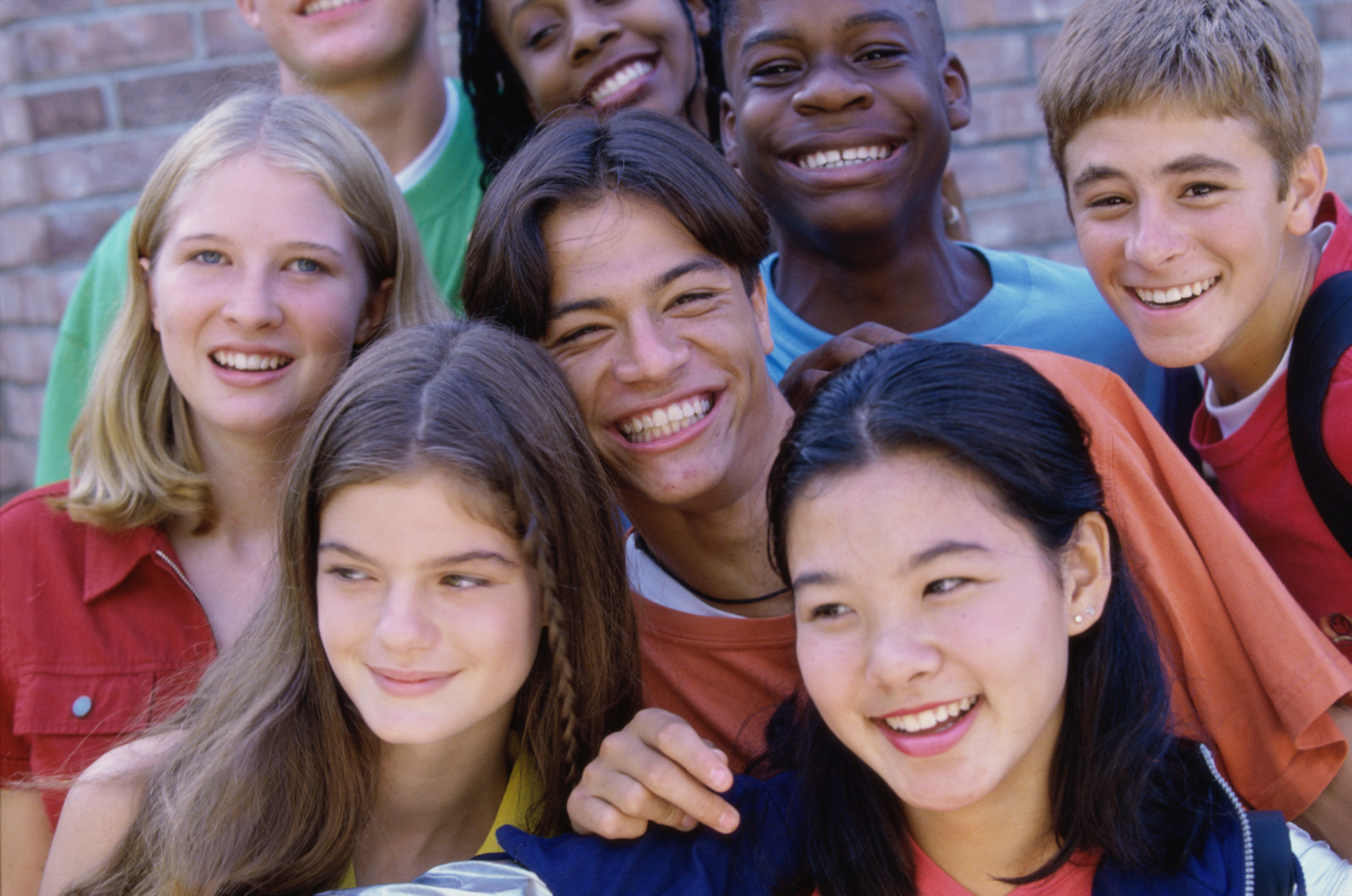Adolescence Based On A True Story: Real Journeys Through Growing Up
Growing up, it's a wild ride, isn't it? That time when a child starts becoming an adult is truly something else. We often talk about this period, this stage of life, as adolescence. It’s a time of big shifts, both inside and out, for young people.
Thinking about adolescence, you might picture teenagers, with their changing voices and new ideas. But it's more than just that. It's a whole phase of life, a bridge from childhood to being grown. For many, this time brings a mix of excitement and, well, a bit of confusion too. It's a universal experience, yet each person's path through it is quite unique, you know?
This article will explore what adolescence truly means, looking at it through the lens of a real journey. We'll see how young people change, what challenges they face, and how they find their footing in a bigger world. It’s about understanding this important stage, and perhaps, finding a piece of your own story in it, or maybe even seeing how to better support someone going through it right now. So, in a way, it's a look at life itself.
Table of Contents
- What is Adolescence, Really?
- The Unseen Shifts: Body and Brain
- Finding Your Place: Social and Emotional Growth
- A True Story Unfolds: The Journey of Alex
- Early Teen Years: The First Tremors
- Mid-Adolescence: The Stormy Seas
- Late Adolescence: Emerging Stronger
- Lessons from Real Life: Supporting Young People
- How to Talk About It: Open Communication
- Common Questions About Growing Up
What is Adolescence, Really?
Adolescence, in simple terms, is the time when a child grows into an adult. My text explains it well, calling it the "transitional phase of growth and development between childhood and adulthood." It’s not just a few years; it's a whole stretch of life. The World Health Organization (WHO) actually says an adolescent is any person between ages 10 and 19. That's a pretty wide age range, isn't it?
This period, typically from about 13 to 19, marks a significant shift. My text points out that "children entering adolescence are going through many changes in their bodies and brains." It's a time of big changes, as a matter of fact. These aren't just small adjustments; they're major transformations that shape who a person becomes. Think about how different someone is at 12 compared to 24; that stretch shows the power of this time.
My text also mentions that adolescence, from the Latin word 'adolescere' meaning 'to mature,' is a transitional stage of human physical and psychological development. It usually happens from puberty to adulthood. It's a unique stage, a time for building good health habits, too. Young people experience fast physical, mental, and social growth. It’s a crucial time, really, for laying down foundations.
- Brothers Keeper Tv Show
- Ed And Lorraine Warren Museum
- How Old Is Luke From Outdoor Boys
- Cost Of Dragon Fruit
- Diamond League Monaco 2024
The Unseen Shifts: Body and Brain
When we talk about adolescence, the physical changes are often the first things people notice. Bodies grow taller, voices change, and new features appear. These are very visible signs that a young person is moving into a new stage. But what's happening inside, especially in the brain, is just as important, if not more so, you know?
The brain during adolescence is still very much under construction. It's not fully formed until the mid-20s. This means the parts of the brain that handle decision-making, planning, and controlling impulses are still developing. So, sometimes, young people might make choices that seem a bit impulsive to adults. It's because their brains are literally wired for exploration and learning, and that's actually quite fascinating.
These brain changes also affect emotions. My text notes that young people experience "rapid physical, cognitive and psychosocial growth." This cognitive growth means new ways of thinking, like being able to think abstractly and consider different viewpoints. But it also means emotions can feel more intense. It's a powerful time, sometimes overwhelming, for them. It's almost like their internal world is expanding very quickly.
Finding Your Place: Social and Emotional Growth
Beyond the physical and brain changes, adolescence is a time for finding one's place in the world. Young people start to think more about who they are and where they fit in. Friendships become incredibly important, and peer groups often shape daily experiences. They start looking beyond their family for support and identity, which is a natural part of growing up, really.
Emotional growth during this period can be a bit of a rollercoaster. There can be big swings in mood, from great happiness to deep sadness, sometimes in a short amount of time. This is partly due to hormonal changes, but also because young people are figuring out how to manage new feelings and social situations. It’s a lot to process, and sometimes, they just need a bit of understanding.
They also begin to question things more, like rules and expectations. This is a sign of developing independent thought, which is a good thing. It's how they learn to form their own beliefs and values. This can lead to disagreements with adults, but it's part of the process of becoming an independent person. It’s like they are trying on different versions of themselves, you know?
A True Story Unfolds: The Journey of Alex
To really see what adolescence looks like, let's consider the journey of Alex. This is a story that captures many common experiences of growing up. Alex's story shows how the definitions from my text play out in real life. It's a story of change, challenges, and eventually, finding strength. It’s a good way to see how these big concepts actually feel for a young person.
Alex, like many young people, started this journey around age 11. They were a cheerful child, interested in everything. But as the teenage years began, things started to shift. It was subtle at first, just a little change in mood here and there, a bit more quietness. It was like the world was suddenly bigger, and Alex was trying to figure out their place in it. This is a time when young people really start to feel different, in a way.
The story of Alex shows that adolescence isn't a straight line. It has twists and turns, moments of triumph and moments of struggle. It's a time of trying new things, making mistakes, and learning from them. It’s a very human experience, filled with all sorts of feelings. And it truly highlights that this period is about more than just physical changes; it's about becoming a whole person.
Early Teen Years: The First Tremors
When Alex turned 12, the first noticeable changes began. Their body started to grow quickly, which felt awkward sometimes. Clothes didn't fit right, and there was a constant feeling of being a bit clumsy. My text mentions "rapid physical growth," and for Alex, this was very real. They also started to feel more tired, needing more sleep than before. It was a lot for their body to handle, basically.
Socially, things shifted too. Friend groups started to change, and what was cool yesterday wasn't cool today. Alex felt a strong need to fit in, to be accepted by certain groups. This led to some difficult moments, like feeling left out or trying to be someone they weren't. It's a time when social pressures can feel immense, like the whole world is watching, you know?
Emotionally, Alex experienced bigger ups and downs. Small things could suddenly feel like huge problems. A bad grade or a misunderstanding with a friend could lead to intense sadness. There was also a growing desire for independence, to make their own choices, even if those choices weren't always the best. This is a common part of this stage, as young people push boundaries, sometimes just a little.
Mid-Adolescence: The Stormy Seas
By age 15, Alex was in the thick of mid-adolescence, a period that felt like stormy seas. Friendships became even more central, but also more complicated. There were arguments, betrayals, and the constant worry about what others thought. This pressure to conform, or to stand out, was very strong. It’s a time when peer relationships really take center stage, and that can be tough.
Academically, school felt more demanding. The future started to loom larger, with thoughts of college or jobs. This brought a new kind of stress. Alex also began to question things more deeply, like fairness and justice in the world. They developed stronger opinions, which sometimes led to clashes with family members. It was a time of intense thought, actually, about their place in the bigger picture.
There were moments of self-doubt and confusion. Alex sometimes felt lost, unsure of who they were or what they wanted. This is a common part of "psychological development" during adolescence, as my text highlights. It’s a time of identity searching, trying on different roles to see what fits. It's like a constant experiment, you know, with themselves.
Late Adolescence: Emerging Stronger
As Alex approached 18 and 19, the stormy seas began to calm. There was a clearer sense of self, a stronger understanding of their own values and beliefs. Friendships became more stable, based on genuine connection rather than just fitting in. The intense emotional swings started to lessen, replaced by a more even keel. This is a sign of maturing, basically, as they get closer to adulthood.
Alex also developed a better sense of responsibility and independence. They started making plans for the future, whether it was college, work, or travel. The ability to think ahead and make thoughtful decisions improved significantly. This period, as my text suggests, is about moving from childhood to adulthood, and Alex was certainly making that transition.
Looking back, Alex could see how far they had come. The challenges faced during the early and mid-teen years had shaped them, making them more resilient and self-aware. It wasn't an easy journey, but it was a powerful one. It shows that even through difficult times, young people can emerge stronger, ready for what comes next. It’s a testament to their inner strength, really.
Lessons from Real Life: Supporting Young People
Alex's story, like many others, offers valuable lessons for those around young people. It highlights the importance of patience and understanding. Adolescence is a time of huge internal and external changes, and it can be confusing for everyone involved. Remembering that their brains are still growing can help explain some behaviors, too.
Creating a safe space for young people to talk about their feelings and experiences is very important. They need to know that they are heard and that their emotions are valid, even if they seem overwhelming. Active listening, without judgment, can build trust. It’s about being there for them, rather than trying to fix everything, you know?
Encouraging independence while still providing guidance is a delicate balance. Young people need opportunities to make their own choices and learn from them. But they also need the support of adults to help them through difficult situations. It’s about giving them room to grow, but also having a safety net. This kind of support is essential, as a matter of fact, for healthy development.
How to Talk About It: Open Communication
Talking with adolescents can sometimes feel like a challenge. They might seem distant or unwilling to share. But keeping the lines of communication open is truly vital. It’s not always about having long, serious talks; sometimes it's just about being present and available. Small, consistent interactions can build a strong connection, too.
Try to find common ground or shared interests. This can be a good way to start conversations that don't feel forced. Ask open-ended questions that invite more than a yes or no answer. Show genuine interest in their world, their friends, and their passions. This helps them feel valued and understood, which is really important for building trust.
Remember that communication is a two-way street. Be prepared to share some of your own experiences, appropriately, of course. This can help them feel less alone in their struggles. It’s about building a relationship where they feel comfortable coming to you, no matter what. And that, in a way, is one of the best gifts you can give them during this time.
Learn more about adolescence on our site, and link to this page for more insights into human development.
Common Questions About Growing Up
People often have questions about adolescence, especially when they are trying to understand the young people in their lives, or even themselves. Here are some common questions that come up, very often, when talking about this stage of life.
What defines adolescence in a real-life context?
In real life, adolescence is defined by a whole bunch of changes. It's when a child's body starts to look and work like an adult's. My text says it's the "transitional stage from childhood to adulthood that occurs between ages 13 and 19." But it’s also about new ways of thinking, like being able to plan for the future, and big shifts in how young people relate to friends and family. It's a time of trying out new identities, figuring out who they are, and developing their own values, you know?
How do personal stories help us understand teenage years?
Personal stories, like Alex's, give us a window into what adolescence actually feels like. Definitions and facts are useful, but a true story shows the emotions, the struggles, and the triumphs. It makes the experience relatable, helping us connect with the universal aspects of growing up, even though each journey is unique. It helps us see the human side of the changes my text describes, like "rapid physical, cognitive and psychosocial growth." It gives depth to the facts, basically.
What are common emotional changes during adolescence?
Emotional changes during adolescence can be pretty intense. Young people might experience strong mood swings, feeling very happy one moment and very sad the next. There can be increased irritability, or a tendency to withdraw. They might also feel more self-conscious or anxious about social situations. These changes are part of their "psychological development" as my text mentions, and they are also linked to brain development and hormones. It's a time of big feelings, and that's actually quite normal for this period.
- Who Is Bob Joyce Wife
- What Happened To Darryl On Swat
- Shih Tzu Before And After Haircuts
- Red Claws Basketball
- Watch Online Hindi Tv Serials Free

A Guide to the Stages of Adolescence - Wake Forest Pediatrics

Stages of Development Changes From Adolescence Through Adulthood

Adolescent Development: An Overview of the Growth of Teenagers